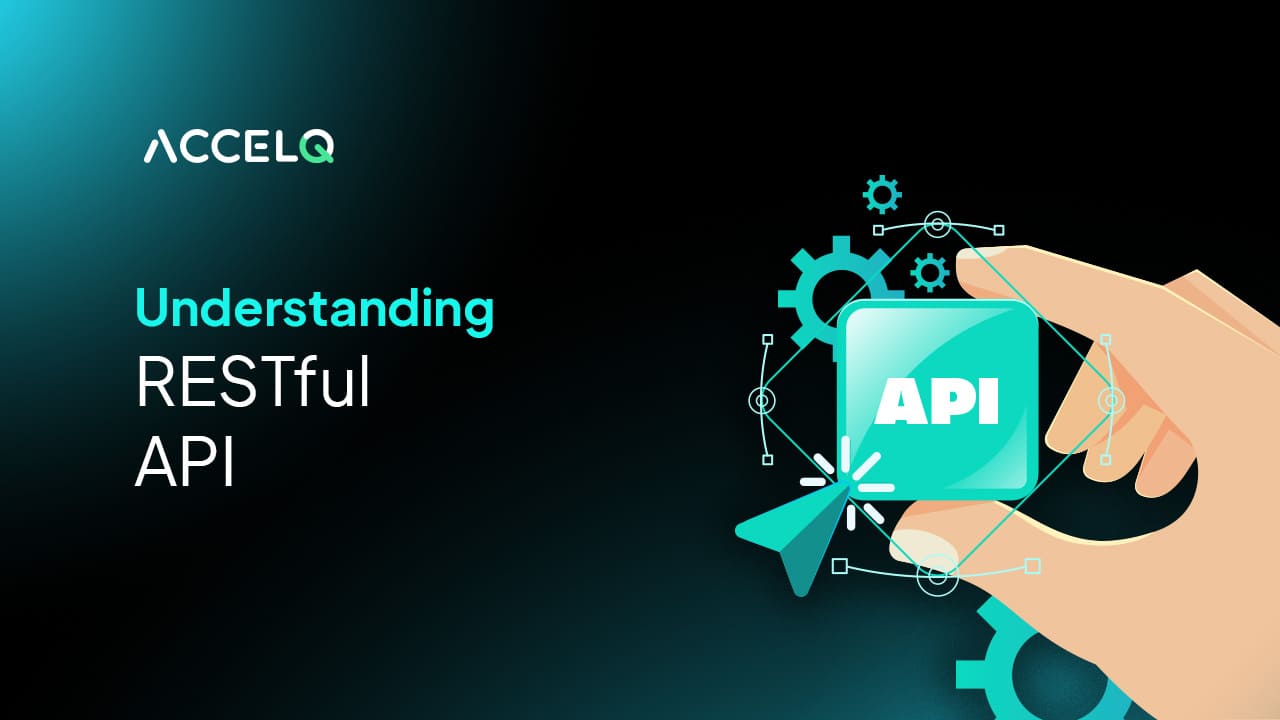Understanding RESTful API: How They Work?

Having a world where different software systems communicate as seamlessly as people do in a conversation. Now, these APIs are responsible for the successful operations of your favorite apps and services, working tirelessly to fetch your weather updates, stream your videos, and manage your social interactions online.
But what happens when these communications break down? Just as a miscommunication in conversation can lead to misunderstandings, a malfunction in an API can disrupt services, frustrate users, and even lead to significant revenue loss. This is where REST API testing comes into play as an essential step that ensures these digital conversations happen smoothly and securely.
What is REST API?
REST (Representational State Transfer) is an architectural style specifically for designing networked applications. The standard HTTP depends on the client-server, stateless, cacheable communications protocol. REST API applications employ HTTP requests to cover the full range of CRUD (Create, Read, Update, Delete) data operations.
Key Characteristics of REST APIs:
- Stateless: The requests sent from a client to a server contain all the required information. It helps the server to understand and respond to the request. The server does not store any state about the client session on the server side.
- Uniform Interface: REST APIs use a standardized interface, simplifying and decoupling the architecture, allowing each part to evolve independently.
- Client-Server: By separating concerns, different teams can develop client and server components independently and simultaneously.
- Cacheable: Responses must define themselves as cacheable or not, which helps to improve network efficiency and client performance.
- Layered System: REST APIs are organized in layers that allow you to structure applications that can scale with demand by introducing load balancers and caching servers.
Why Are REST APIs Important?
REST APIs are widely regarded as an important part of modern web services and applications. It enables diverse platforms and systems to communicate and share data seamlessly. They support XML, JSON, and other formats for data communication. This process makes them highly adaptable and suitable for various Internet services. Their use facilitates flexibility in development, reduced latency, and improved scalability, making them a preferred choice for public APIs.
Applications of REST APIs:
- Web and Mobile Applications: Powering front-end applications by connecting them with backend services and databases.
- Internet of Things: Enabling devices to send and receive data through the internet.
- Cloud Services: Integrating various services seamlessly in cloud environments.
- Social Networking Services: All major social media platforms use REST APIs for public and private communications.
Types of REST APIs
REST APIs can be categorized based on their level of adherence to REST principles and their application domain. Understanding these types can help developers and testers choose the right design and testing strategies.
1. CRUD APIs:
Most common types of REST APIs are designed around the CRUD operations. They are used to manage resources and typically operate over standard HTTP or HTTPS protocols using methods such as GET, POST, PUT, PATCH, and DELETE.
2. RESTful Level 3 APIs (HATEOAS):
HATEOAS (Hypermedia as the Engine of Application State) is a constraint of REST application architecture that keeps the RESTful style architecture unique from most other network application architectures. The principle is that a client interacts with a network application entirely through hypermedia provided dynamically by application servers. A HATEOAS-based API shows the possible state transitions in its response to the client, enabling more dynamic and adaptable interactions.
3. OAuth APIs:
These APIs are particularly focused on authentication and authorization. They manage security aspects and provide mechanisms for secure access to resources. OAuth APIs are integral in scenarios where resources are accessed by third-party applications.
4. Real-time APIs:
These APIs facilitate real-time data transfer and processing, often used in applications requiring instant data updates like chat apps or live game scoreboards. They might use WebSockets in addition to standard HTTP methods.
5. Partner APIs:
Exposed only to strategic business partners, these APIs are less public and more controlled. They are tailored for specific external users and are often governed by stricter authentication protocols.
REST API Testing Before Deploying vs After Deploying
| Aspect | Before Deploying | After Deploying |
|---|---|---|
| Goal | Identify and fix issues before the API is exposed to users or live environments. | Ensure the API performs well in the live environment and catch any issues missed earlier. |
| Focus Areas | Functional correctness, security, performance baseline. | Real-world usage patterns, scalability, and long-term stability. |
| Testing Methods | Unit tests, integration tests, security audits, load testing. | Monitoring, A/B testing, canary releases, and real user monitoring (RUM). |
| Strategies | Conduct thorough pre-release tests. Ensure all features meet the design specifications. | Implement robust monitoring systems. Use progressive deployment techniques like canary releases and blue-green deployments. |
How to do REST API Testing?
Here’s how you can approach the REST API testing process efficiently.
Understand REST Principles:
Get familiar with the fundamentals of statelessness, layered systems, and uniform interfaces. This will help formulate test cases that test API's functionality and architectural compliance.
Define Test Cases for HTTP Methods:
Each HTTP method represents a different type of interaction with the resources.
- GET for retrieving the data
- POST for creating data
- PUT for updating or replacing data
- DELETE for removing data
Design test cases that can validate the functionality of each method while considering the RESTful principles.
Status Codes and Payload:
RESTful APIs use standard HTTP status codes to indicate the success or failure of an API. Test the code implementation for various scenarios. And also ensure the payload responses validate against predefined schemas.
Test Authentication and Authorization:
Security testing becomes important since the REST APIs are often exposed over the internet. It ensures the mechanisms like OAuth or API keys.
Monitor and Validate:
Continuous monitoring of the REST API in production helps quickly detect and rectify issues missed during the pre-deployment testing.
Automate and Integrate:
Working with automation tools like ACCELQ to write and manage your API tests. Automation facilitates the integration of API testing into CI/CD pipelines, enabling continuous testing and deployment.
Challenges in REST API Testing
Testing REST APIs comes with unique challenges due to their diverse data formats and the necessity for secure communication. Here are some common REST API challenges and best practices to tackle them.
Varied Data Formats:
Challenge: REST APIs have the data in multiple formats - JSON, XML, HTML, etc. Ensuring accuracy in validating each of the formats is not an easy task.
Solution: Use API testing tools to validate responses against predefined schemas automatically. Implement tests that can specifically check for the performance of various content types.
Ensuring Security:
Challenge: REST APIs are often exposed to the internet, which makes them vulnerable to security threats.
Solution: Implement security testing, including automated vulnerability scans and integrating test cases into regular testing cycles.
Integration with External Services:
Challenge: REST APIs often depend on external services and databases, leading to unpredictable testing outcomes if the services are unstable.
Solution: Use service virtualization to simulate external APIs and other third-party services. It enables for more consistent and reliable testing environments.
Frequent Changes in API:
Challenge: APIs may frequently evolve, requiring constant updates in test cases, which can be resource-intensive.
Solution: Adopt an API first design approach where the API design and documentation are updated before the actual implementation. Automated regression tests ensure that updates do not break the existing functionality.
Performance and Scalability:
Challenge: Ensuring that the APIs can handle large volumes of requests and data without degradation of performance.
Solution: Conduct performance testing using automation testing tools to simulate high traffic and analyze the API’s response times and throughput.
Test Automation for REST APIs
Automating REST API testing can significantly improve the efficiency and coverage of your testing processes. Here’s how to approach automation:
Define Your Test Cases:
Create test cases that cover all aspects of your API functionality. This includes testing various HTTP methods, error handling, security, and performance tests.
Scripting Tests:
Using the chosen tool, script your tests. This often involves setting up requests, defining expected responses, and writing assertions to ensure the API behaves as expected.
CI/CD:
Integrate your automated tests into your CI/CD pipeline. This ensures that tests are run automatically every time there is a change in the API, helping to catch issues early.
Maintain and Update Tests:
As your API evolves, so too must your tests. Regularly review and update your tests to ensure they remain effective and relevant.
Conclusion
Effective testing ensures that REST APIs perform as intended, with reliability, efficiency, and security. With automation tools like ACCELQ, the complexity and scope of testing can be managed more efficiently, allowing teams to maintain high-quality standards. Regular updates to testing strategies and embracing automated testing integration within CI/CD pipelines are crucial for adapting to changes swiftly and effectively.
Geosley Andrades
Director, Product Evangelist at ACCELQ
Geosley is a Test Automation Evangelist and Community builder at ACCELQ. Being passionate about continuous learning, Geosley helps ACCELQ with innovative solutions to transform test automation to be simpler, more reliable, and sustainable for the real world.
Discover More
 Cucumber in Test Automation: Implementation, Challenges, and Future Trends
Cucumber in Test Automation: Implementation, Challenges, and Future Trends
Cucumber in Test Automation: Implementation, Challenges, and Future Trends
 From Bugs to Glory: The Exciting Story Behind World Tester’s Day
From Bugs to Glory: The Exciting Story Behind World Tester’s Day

































